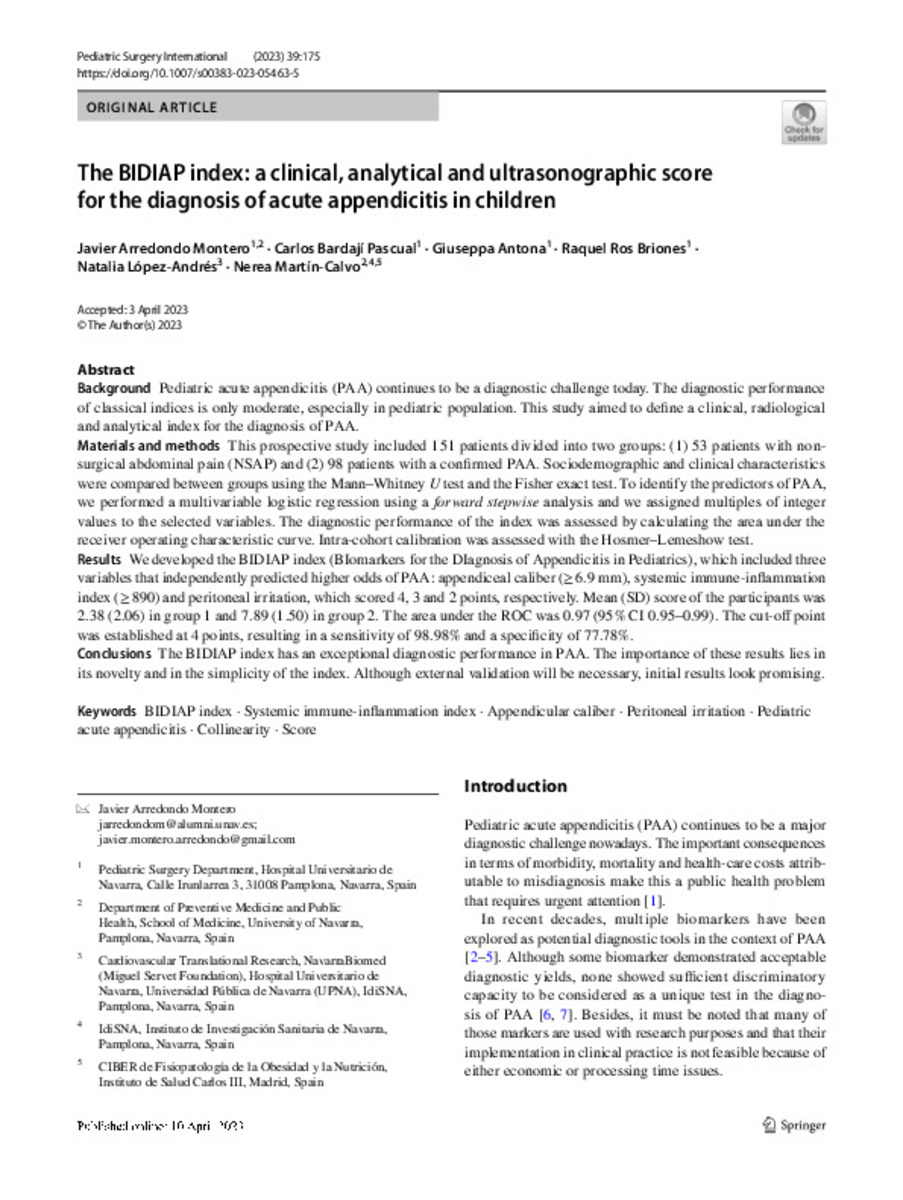The BIDIAP index: a clinical, analytical and ultrasonographic score for the diagnosis of acute appendicitis in children
Keywords:
Appendicular caliber
BIDIAP index
Collinearity
Pediatric acute appendicitis
Peritoneal irritation
Score
Systemic immune-inflammation index
Note:
This article is licensed under a Creative Commons Attribution 4.0 International License
Citation:
Arredondo-Montero, J. (Javier); Bardají-Pascual, C. (Carlos); Antona, G. (Giuseppa); et al. "The BIDIAP index: a clinical, analytical and ultrasonographic score for the diagnosis of acute appendicitis in children". Pediatric Surgery International. (39), 2023, 175
Statistics and impact
0 citas en

0 citas en

Items in Dadun are protected by copyright, with all rights reserved, unless otherwise indicated.







